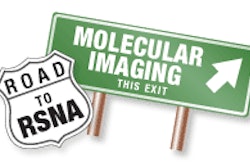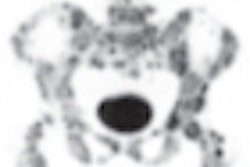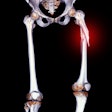Monday, November 26 | 11:30 a.m.-11:40 a.m. | SSC09-07 | Room S504CD
In this presentation, German researchers will discuss their preliminary success with an ultrasound contrast agent -- known as BR55 -- that uses microbubbles targeting vascular endothelial growth factor receptor 2 (VEGFR2) to assess liver dysplasia.Use of the agent could distinguish early stages of liver dysplasia from normal liver before changes in vascularization can be depicted with nontargeted contrast agents, according to the group from University Hospital Aachen.
In the study, two types of contrast agent were used to image mice with liver dysplasia and mice without the affliction. Both groups underwent liver imaging using a clinical ultrasound system equipped with contrast-specific software to compare a contrast agent with nontargeted microbubbles to BR55.
"VEGFR2 is the most noted molecular marker for targeted imaging of tumor angiogenesis," explained lead study author Dr. Moritz Palmowski, PhD, a resident in the hospital's department of nuclear medicine. "In various preclinical studies, the VEGFR2 expression has been shown to be a robust marker for diagnosis of tumor tissue."
Peak enhancement between the two contrast agents did not differ in either group of mice, the researchers found. Over four minutes, the nontargeted microbubble signal decreased similarly in healthy and dysplastic mice livers. However, BR55 showed a significantly greater accumulation within dysplastic livers compared with healthy livers at two, three, and four minutes after administration.
Molecular ultrasound analysis five minutes after injection indicated that site-specific binding of BR55 was significantly higher in dysplastic than healthy livers.
"This study outlines the potential value of the clinically translatable contrast agent BR55 for the assessment of liver dysplasia," Palmowski said. "Thus, the study provides the motivation to further investigate targeted ultrasound contrast agents for imaging liver diseases."




















